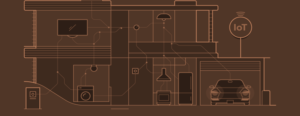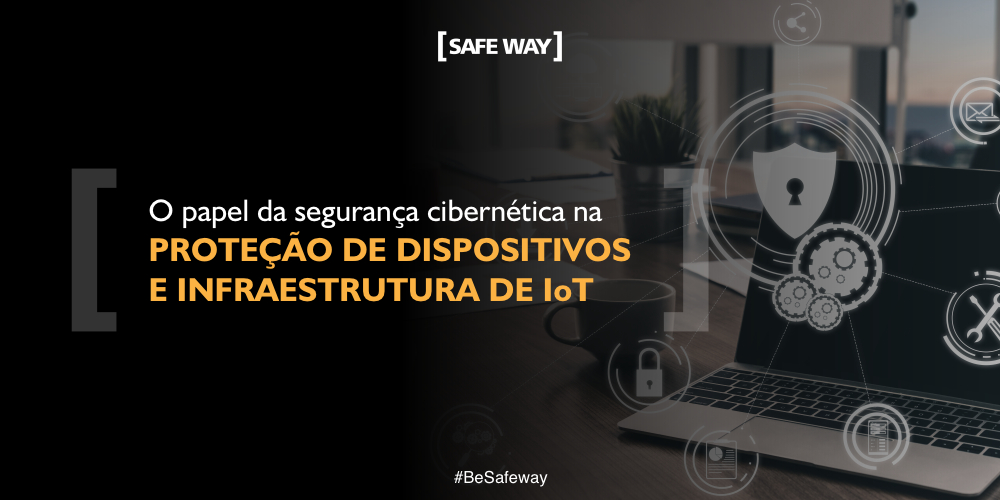São Paulo/SP – May 5, 2023 – With the increasing connectivity of IoT devices, it is essential to ensure data protection and prevent cyber attacks. In this article, we will discuss protective measures and best practices to ensure the security of IoT devices and networks.
*Eliezer Souza – Cyber Security (Red Team) – Senior Manager
THEREoT (internet of things), or “Internet of Things”, refers to the interconnection of physical devices, such as home appliances, vehicles, industrial equipment, and wearable devices, to the internet. These devices are equipped with sensors, software and network connectivity that allow them to collect and exchange data with each other and with remote systems, enabling process automation, real-time monitoring and autonomous decision-making. IoT has the potential to revolutionize several sectors, such as industry, healthcare, transportation, agriculture, among others, offering greater efficiency, convenience and opportunities for innovation.

However, the IoT it also presents significant challenges in terms of security and privacy, as the interconnection of devices can expose sensitive data and create vulnerabilities in networks and systems. Properly securing IoT devices and networks is critical to ensuring data confidentiality, integrity, and availability, as well as preventing cyberattacks and security breaches. Protection measures such as the use of security protocols, regular software updates, strong authentication, data encryption and continuous monitoring are essential to mitigate the risks associated with IoT and ensure the security of the devices and data involved.
With the increasing connectivity of IoT devices, it is critical to ensure data protection and prevent cyber-attacks. In this article, we will discuss protective measures and best practices to ensure the security of IoT devices and networks.
protective measures
- Application security protocol Connecting network devices:
It is important to implement security protocols in applications and network devices to ensure the protection of transmitted data. Make sure to disable low security support and regularly check your role settings and access methods for security alerts. Furthermore, it is crucial to replace the default password with a new strong password and change it regularly [1].
Other network security functions such as WAN security, port security and IP filtering offered by reliable vendors like Hikvision can be used to protect the transmission data and prevent common attacks [2].
- Disconnect unused devices:
An effective safety measure is to unplug or turn off devices that are not in use or are not essential. Nowadays, many devices, including appliances, TVs, locks, clocks, lamps and connected toys, can pose security vulnerabilities when connected to the network [3]. Therefore, it is important to assess each device's need for connection and disconnect those that are not needed.
Protect against cyberattacks and data breaches:
IoT security threats range from simple password breaches to sophisticated attacks that exploit vulnerabilities in outdated hardware and software. It is essential to invest in hardened operating systems that use “machine learning” and are regularly updated to protect against these attacks [4].
Implement best practices for IoT cybersecurity: Just like traditional devices, IoT tools are also subject to cyberattacks. Therefore, it is important to implement the best security practices, such as using “machine learning” systems that learn continuously and can detect and block even the most sophisticated attacks [5].
End-to-End Protection: Protecting employees, customers, valuable operational technologies and business investments with enhanced security for IoT infrastructures requires an end-to-end approach. It is important to use the right technologies and protocols to protect data, devices and connections [6].
Prepare for 5G Connectivity: With the increasing adoption of 5G technology, the connectivity of IoT devices will expand, which will require even stronger security for all devices. endpoints of the IoT[7]. It is important to be prepared for this technological evolution and ensure that security measures are updated accordingly.
There are several companies in Brazil that apply artificial intelligence (AI) to the Internet of Things (IoT) to develop innovative solutions. Some of the main companies in this segment in Brazil include:
O CPqD is a Brazilian organization that develops advanced technologies, including IoT and AI solutions. The company has expertise in areas such as industrial automation, smart cities, digital health and precision agriculture, applying AI in its solutions to optimize processes and improve real-time decision-making.
THE WND Brazil is a company specialized in IoT, offering IoT device connectivity and management solutions. The company uses AI technologies to analyze data collected by IoT devices, such as sensors and meters, to provide valuable information for diverse sectors, such as agriculture, industry, logistics and utilities.
THE neoway is a Brazilian company that uses AI for real-time data analysis, focusing on IoT solutions for the logistics and transport sector. The company offers a data analytics platform that enables decision-making based on data collected by IoT devices, such as fleet monitoring sensors, helping to optimize logistics and asset management.
THE Gridtics is a company that offers IoT and AI solutions for the electric energy sector, focusing on smart metering and data analysis for energy utilities. The company uses AI to analyze data from power grid meters and sensors, enabling fault detection, power quality monitoring and demand forecasting, which can help with the efficiency and reliability of electrical power distribution.
These are just some of the Brazilian companies that are applying AI in IoT. The AI and IoT landscape is dynamic and constantly evolving, with new companies and startups emerging and bringing innovative solutions to the market. It is important to always research and verify the companies that are operating in the AI and IoT segment in Brazil to identify the best options for the specific needs of each project or business.
Conclusion
Based on the article, it can be concluded that the “Internet of Things” (IoT) is a promising technology that offers numerous opportunities for innovation and efficiency in various sectors. The interconnection of physical devices to the internet, enabling the collection and exchange of data in real time, can transform the way industries, healthcare, transportation, agriculture and other sectors operate.
However, it is important to highlight that security and privacy are significant challenges when implementing IoT. Ensuring adequate protection of IoT devices and networks is critical to preventing security breaches and protecting sensitive data. Robust security measures such as the use of secure protocols, regular software updates and strong authentication are essential to mitigate the risks associated with IoT.
In summary, IoT offers significant opportunities for improvement in many sectors, but security and privacy must be considered as key elements in the implementation of these technologies in order to ensure safe and reliable use of IoT in the future.
References
- Cybercrime is on the rise and cybersecurity must be a top priority in every industry. https://www.securityreport.com.br/overview/crimes-ciberneticos-crescem-e-ciberseguranca-deve-ser-prioridade-todos-os-setores/ accessed 2023-04-17
- Cybersecurity in the IoT age – the multi-layered imperative. https://www.hikvision.com/pt-br/newsroom/blog/cybersecurity-in-the-iot-era—the-multi-layered-imperative/ accessed 2023-04-17
- Boas práticas de segurança para dispositivos IoT.https://pt.linkedin.com/pulse/boas-pr%C3%A1ticas-de-seguran%C3%A7a-para-dispositivos-iot-alexandre-pinheiro acessado 2023-04-17
- Securing IoT devices makes the Internet more secure. https://www.globalsign.com/pt-br/blog/proteger-devices-iot accessed 2023-04-17
- How to manage and secure IoT devices?. https://upx.com/post/protecao-iot/ accessed 2023-04-17
- IoT security and an overview: https://azure.microsoft.com/en-us/resources/cloud-computing-dictionary/what-is-iot/security/ accessed 2023-04-17




